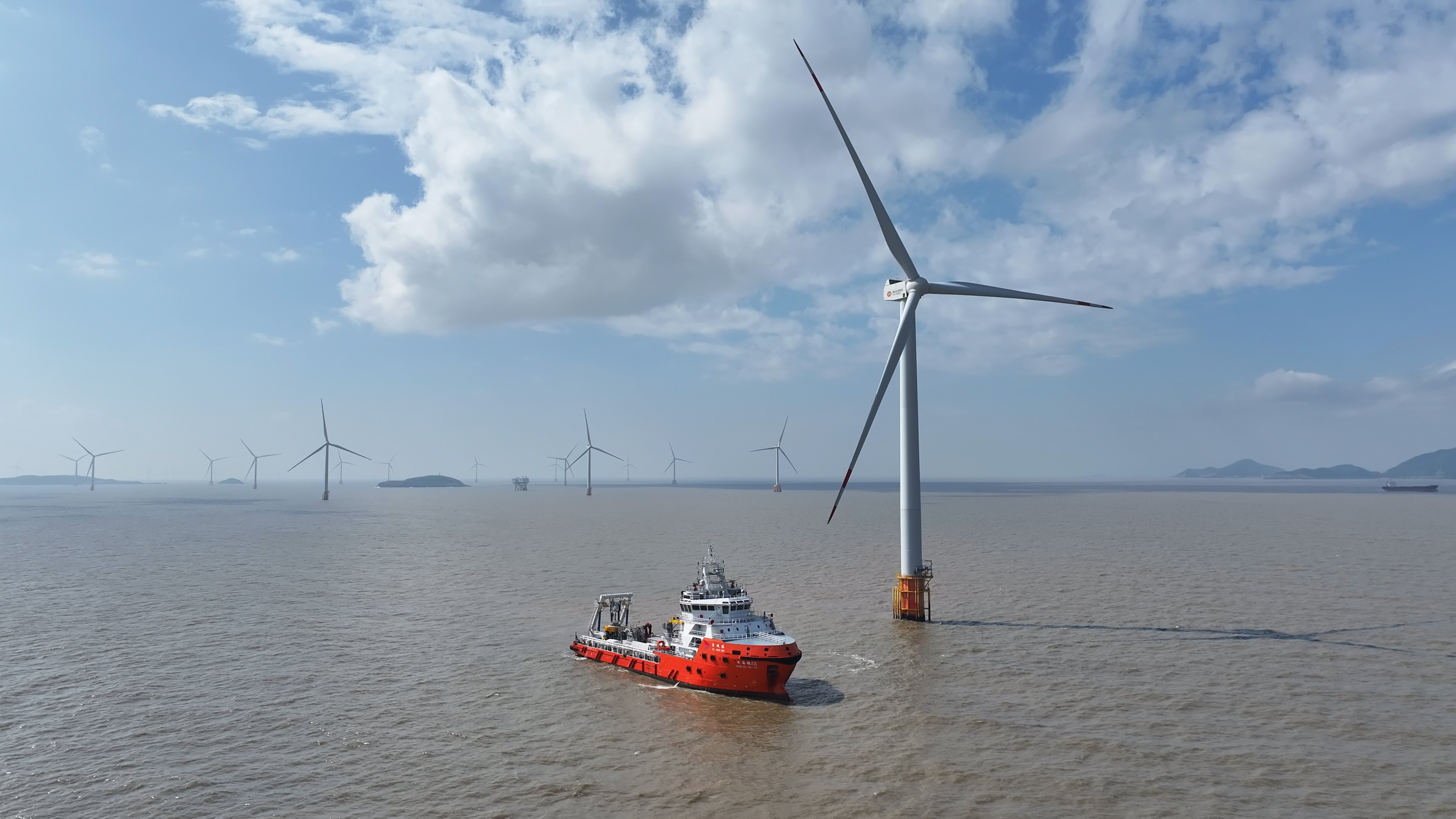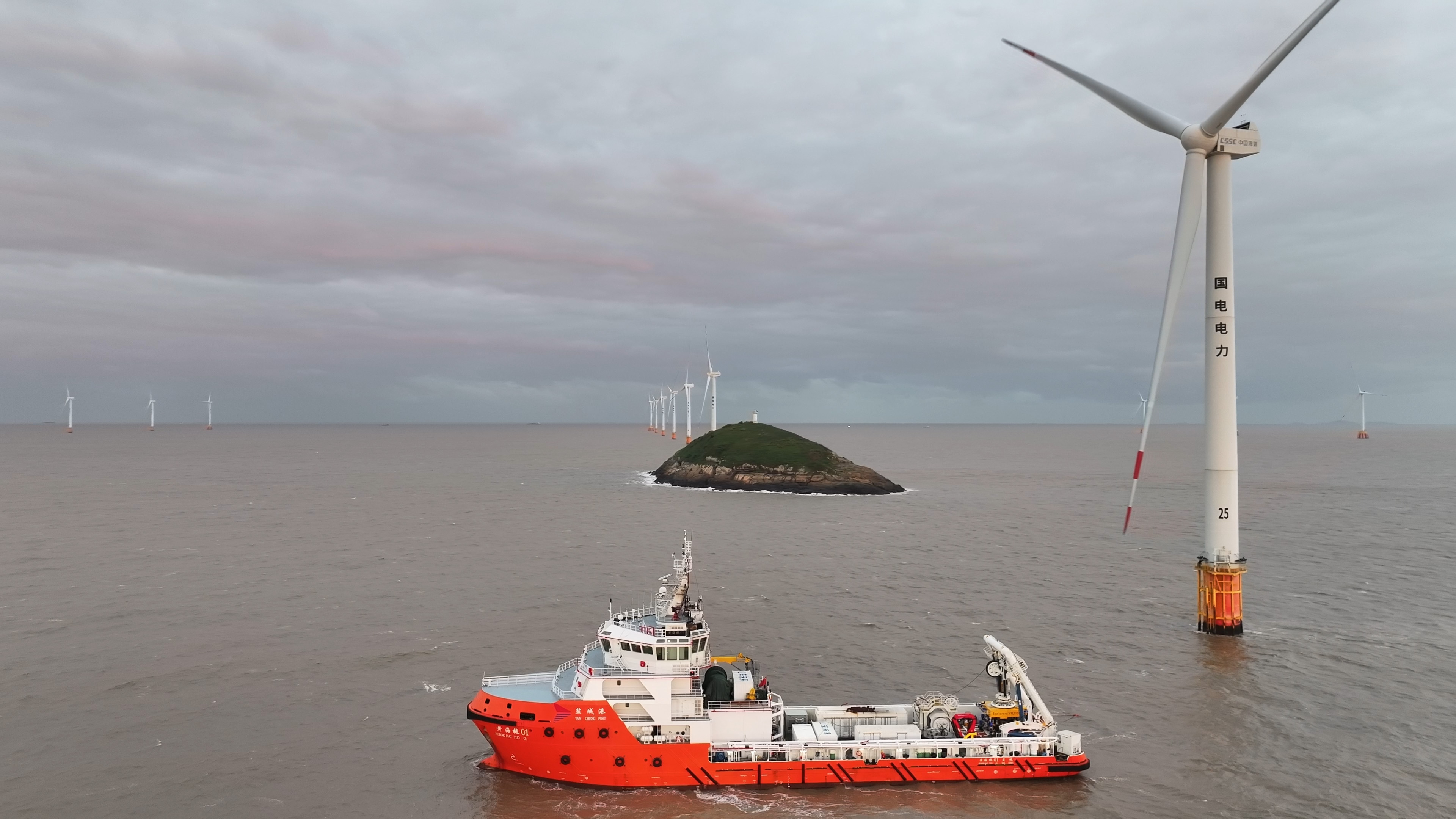Offshore Wind Power Project Submarine Cable Post-Trenching Case Study (2024 Zhejiang Xiangshan Phase I)
In the fall of 2024, our company undertook the submarine cable post-trenching task for the Phase I Offshore Wind Power Project in Xiangshan, Zhejiang. The goal of this project was to provide post-trenching protection for all exposed submarine cables, including sections between wind turbines, from turbines to the booster station, interconnections between booster stations, and cable crossing nodes. This ensured the safety and long-term operational stability of the entire cable route.
Key Challenges
Complex Marine Conditions:
The project area featured challenging marine conditions with significant tidal ranges, high flow velocities, and constantly shifting currents, leading to turbulent waters. The frequent typhoon activity in autumn further limited the effective operational window, posing severe challenges for project scheduling and equipment adaptability.
Technical Difficulties:
The submarine cables were operational during the project, requiring high-precision construction under conditions of uninterrupted power transmission. The construction process needed to ensure uniform cable stress, avoiding mechanical disturbances that could damage insulation layers or internal structures. Additionally, stringent requirements were set for trenching depth and uniform coverage.
Safety Risks:
- Near-Turbine Operations:
- The dynamic operation of turbine blades posed collision risks to vessels and equipment.
- Mechanical operations required precision to prevent secondary damage caused by construction activities.
Solutions
Dual-Machine Collaborative Construction System
- Utilized the VCG550 Trenching Machine equipped with a non-contact hydraulic jetting system and adaptive nozzle control to ensure that no physical contact occurred with cables or joints during construction, effectively mitigating risks of mechanical damage.
- Deployed the VYL1100 Trencher for non-contact operations, performing high-power trenching above cables, joints, and crossing points. This accurately buried cables into pre-set trenches while maintaining construction precision and safety.
Turbine Yaw Coordination Construction Mode
In near-turbine operations, the turbine blades were dynamically adjusted to a leeward position based on client requirements and construction location. Construction vessels and equipment operated behind the turbine blades, minimizing operational interference and ensuring construction safety and turbine stability.
Project Results
This project achieved a 100% standardized post-trenching completion rate for the submarine cables. Using a non-contact construction system, zero mechanical damage was recorded throughout the process. The turbine yaw coordination mechanism significantly reduced risks during near-turbine operations. Trenching depth at crossing points met strict standards, with a compliance rate of 100%. The overall construction quality reached international standards.
As a benchmark for submarine cable trenching projects under complex marine conditions in the East China Sea, this project not only set a new standard for offshore wind power operation and maintenance but also provided a replicable “China Solution” for global offshore wind power projects.

